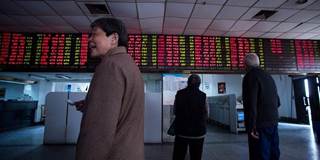There is growing awareness among policymakers of the risks to the global economy posed by deflation and intensifying financial instability. In mitigating these risks, avoiding a hard landing in China is a necessary but insufficient condition for global recovery.
HONG KONG – In March, meetings of the G-20, the Chinese National People’s Congress, and multiple think tanks all reflected a growing awareness of the risks to the global economy posed by deflation and intensifying financial instability. In mitigating these risks, the path that China takes will be particularly important. But avoiding a hard landing in China is a necessary but insufficient condition for global recovery.

HONG KONG – In March, meetings of the G-20, the Chinese National People’s Congress, and multiple think tanks all reflected a growing awareness of the risks to the global economy posed by deflation and intensifying financial instability. In mitigating these risks, the path that China takes will be particularly important. But avoiding a hard landing in China is a necessary but insufficient condition for global recovery.